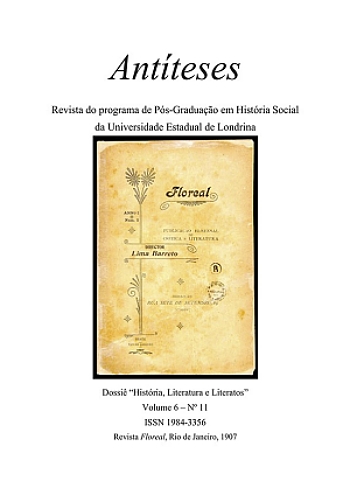The participation of women in Christian Gnostic circles in the 2nd and 3rd centuries
DOI:
https://doi.org/10.5433/1984-3356.2013v6n11p335Keywords:
Gnosticism, Women, ChurchAbstract
This work aims to reflect on the participation of women in the Christian Gnostic movements of the 2nd and 3rd centuries. Therefore we take as sources the accounts of the heresiologists Irenaeus of Lyons and Tertullian, who in their works show great concern regarding the participation of women in Gnostic circles. In contrast to these views, we will use the Gnostic texts discovered at Nag Hammadi in 1945. These writings present us with various female images that appear from the act of creation or appear as symbols of wisdom, as opposed to the orthodox view that God thought only in masculine terms. To reflect on the participation of women in Gnostic circles, we will seek the elaborations of Ginzburg (1989; 2005) on the indicative paradigm and cultural circularity and of Chartier (1992, 2001) on the history of reading. We will also look at the studies of Foucault (1984, 1085, 2006) and Brown (1988) for the various discourses of the body in Christian Antiquity. In the analysis of the speeches of Irenaeus of Lyons and Tertullian, on the one hand, we perceive that many women who circulated in the Church and in Gnostic circles were in contact with various religious texts and ritualistic practices. On the other hand, we perceive that the participation of women in these movements did not imply a relationship of equality, but rather the absorption of the feminine element in a perspective of redemption.Downloads
Download data is not yet available.
Downloads
Published
2013-06-01
How to Cite
MATIAS, Carlos Almir. The participation of women in Christian Gnostic circles in the 2nd and 3rd centuries. Antíteses, [S. l.], v. 6, n. 11, p. 335–336, 2013. DOI: 10.5433/1984-3356.2013v6n11p335. Disponível em: https://ojs.uel.br/revistas/uel/index.php/antiteses/article/view/15601. Acesso em: 19 dec. 2025.
Issue
Section
Abstracts of Doctoral Theses
License
Copyright (c) 2013 Antiteses

This work is licensed under a Creative Commons Attribution 4.0 International License.
The journal reserves the copyright on the contributions published, without material compensation for the author, and may make them available online in Open Access mode, through its own system or other databases; you can also make normative, orthographic and grammatical changes in the originals, in order to maintain the cultured standard of the language, with the final consent of the authors. The opinions expressed by the authors are their sole responsibility.










